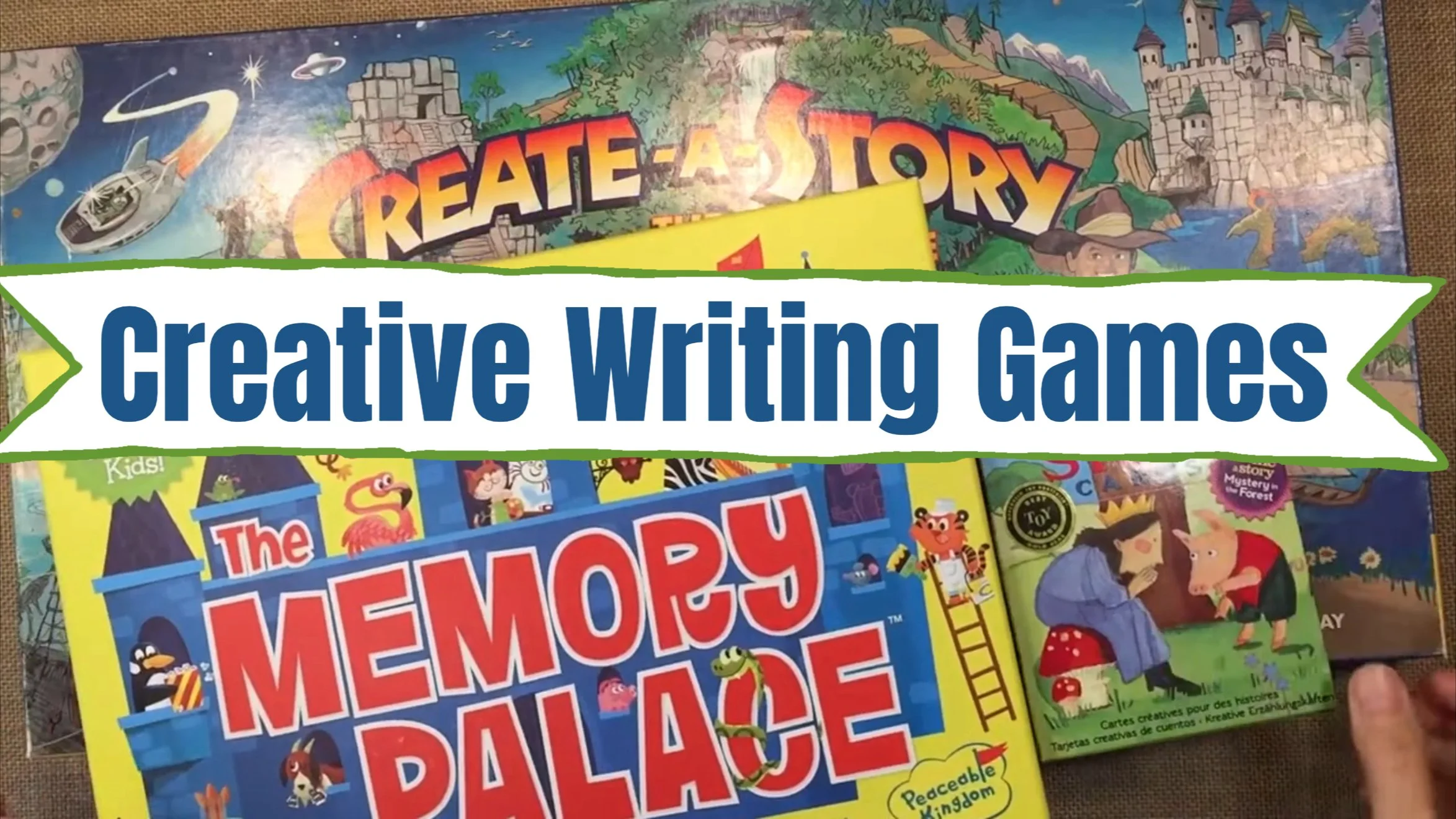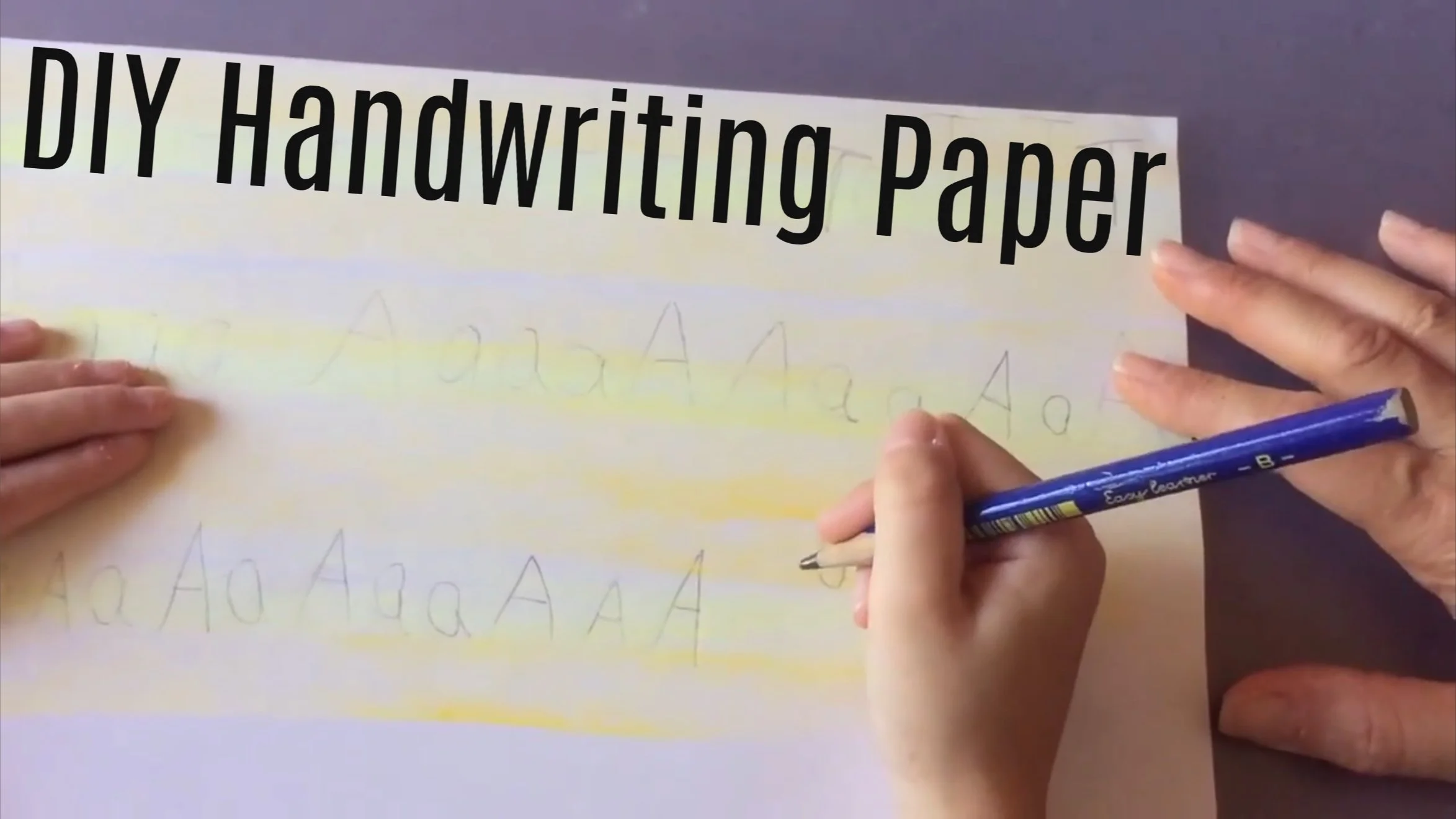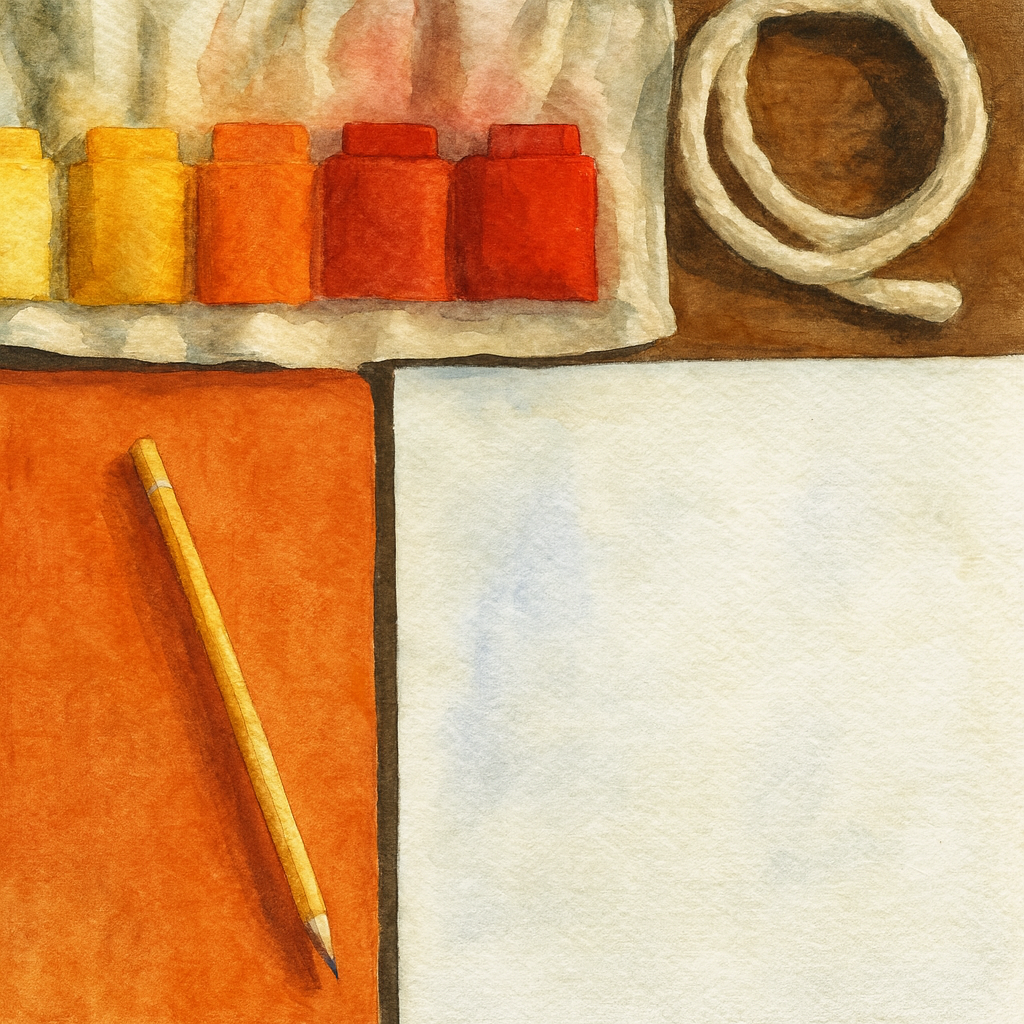
Language Arts, Literature & Poetry
Poetry
Language Arts & Literature
My 10-year-old daughter requested a unit on poetry. Since we've included poetry in our main lesson blocks as part of the lessons or opening activities, we had a lot of resources to choose from. I narrowed down the lessons to focus on three main areas: biographies, poetry and composition.
To help with the poetry writing portion of this unit, I plan to use the Interactive Poetry Journal by Fatima Mohammad. This journal accompanies the book Time to Rhyme which is written and illustrated by the talented poetess Fatima Mohammad. I've come to enjoy poetry written by children and find that my 10-year-old daughter does as well.
In addition to the interactive poetry journal, I have three poetry books that include biographies. I especially like adding biographies to our units whenever possible. What's great about these resources is that they include the poetry that is mentioned throughout the biography.
I learned about some poetry books for two voices by my friend Lindsey, and though we bought them years ago, we are only just now incorporating them into our unit. I couldn't do a poetry unit without including my favorite poetry book for children called Plum by Tony Mitton.
Poetry
-

Poetry Main Lesson Block
My 10-year-old daughter requested a unit on poetry. Since we've included poetry in our main lesson blocks as part of the lessons or opening activities, we had a lot of resources to choose from. I narrowed down the lessons to focus on three main areas: biographies, poetry and composition.
-

Poetry Teatime Companion
If you are new to Poetry Teatime or poetry in general, this book will be perfect for you!! Poetry Teatime Companion edited by Julie Bogart is a sampling of British and American Poets. Each poem comes with an illustration as well as information about the poet including birth place, family and more.
-

Poetry Tea Time | Poetry Books
We first introduced poetry in our homeschool as part of a unit study in 2008. One of our most memorable takeaways from that units was The Caedmon Poetry collection (link below). It's a collection of poetry read by the poet, and it's an amazing resource and treasure.
Literature
-

Literature Based Curriculum Review | 5th & 6th Grade
I love the concept behind these language arts workbooks. They are paired with popular and classic novel to help students learn vocabulary, reading comprehension and literary analysis in a fun and engaging way. I'm just sad it didn't work well for two of my children, but there's hope for my last student!
-

High School English Curriculum
When choosing English literature books for my 9th grader, I looked for ones with a historical theme, set in a time period we were studying or were American classics. That way, the books my son was reading for English complemented his US History studies.
Copywork & Dictation
-

Copywork and Dictation for The Muslim Child | Islamic Curriculum | 99 Names of Allah
Each week a name of Allah will be focused for the duration of the week. On Day 1 of the week, the new sentence is presented and the student copies the sentence in the workbook. On Day 2 (the the previous lesson covered by a piece of paper), the teacher reads the sentence to the student who then writes the sentence into the workbook.
-

How We Do Copywork and Dictation
How do you do copywork and dictation? I share snippets from our homeschool day via Instagram Stories to show you how we do Copywork and Dictation in our homeschool. These are live lessons. To see more of our homeschool day, be sure to find me on Instagram.
-
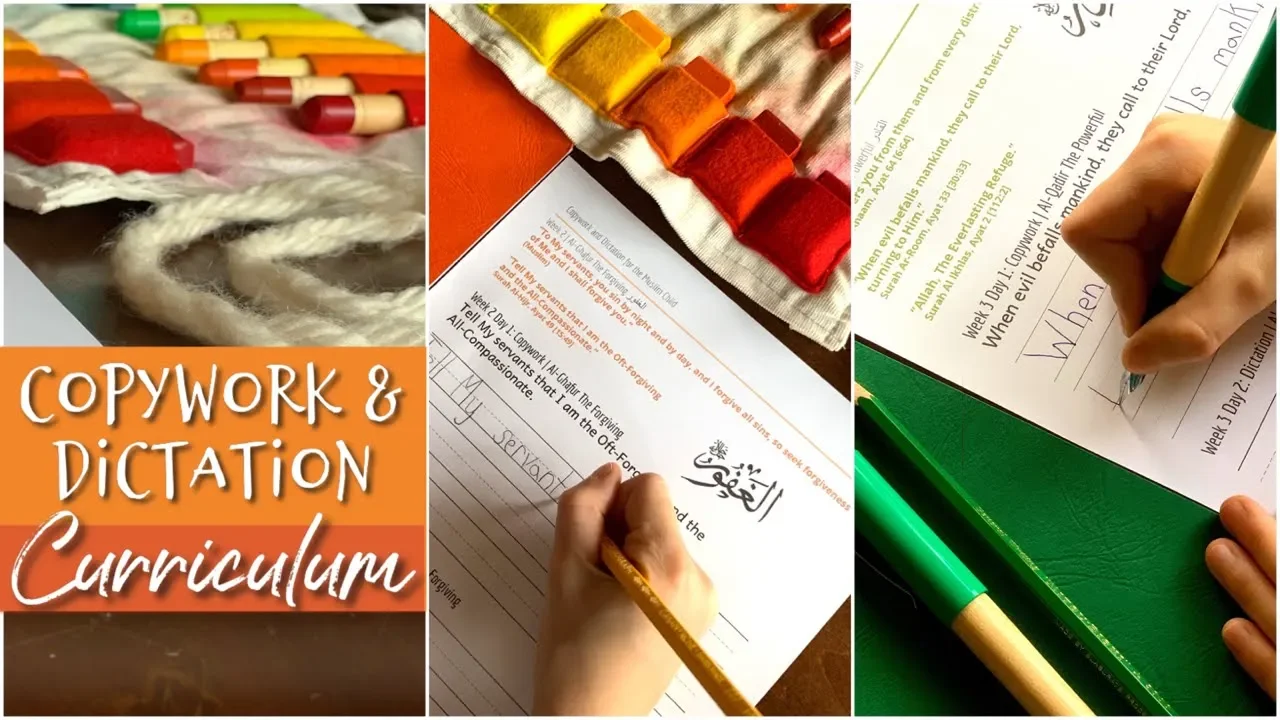
Copywork and Dictation Curriculum
Copywork and Dictation for the Muslim child is a curriculum using ayat which mention the 99 names Allah as content for copywork, dictation and memory work.
Reading & Writing
-
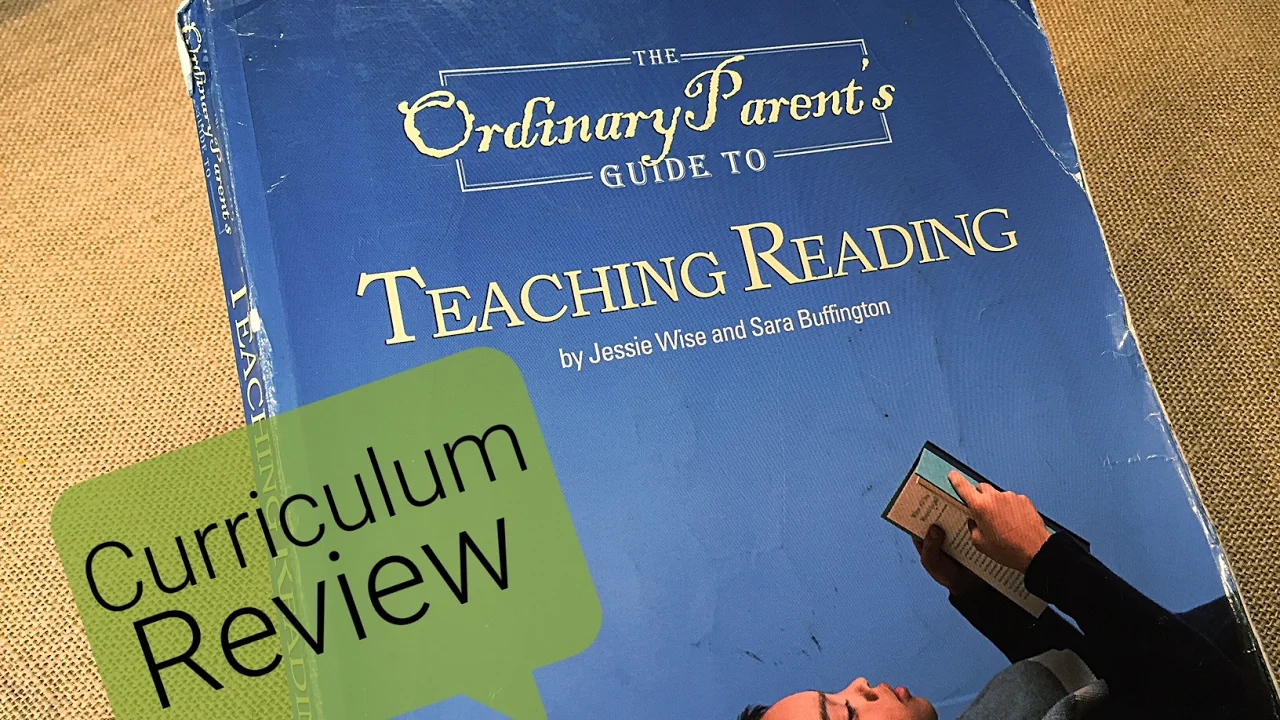
Ordinary Parent's Guide to Teaching Reading
We’ve worked through the Ordinary Parent’s Guide to Teaching Reading by Jessie Wise and Susan Buffington twice! I didn’t use this curriculum with my oldest child, but I used it with my second and third child and am undecided on whether I’ll use it with my fourth one. Since we use a Waldorf curriculum, I want to clarify that the Ordinary Parent’s Guide to Teaching Reading is not a Waldorf or Waldorf inspired curriculum.
-
Storytelling Games | Creative Writing
Do you struggle with getting your kids to write? Why not try these educational games to inspire creative storytelling. You can play these games for fun or as part of your homeschool or to support your child’s education. I struggled with storytelling for many years. Often my stories were endless descriptions of settings with no story. Or a monotonous journey with no action. Though these games may not solve those problems, they will give your creativity a boost.
-

Live Cursive Handwriting Lesson | Homeschool
Here's a live homeschooling lesson for cursive handwriting for my 12-year-old son. Handwriting has always been a struggle for my boys, but with practice, they've definitely improved. I've teetered on the fence of whether or not to teach cursive handwriting and insist that my students master this skill.
-
DIY Handwriting 'Paper'
We made some DIY handwriting paper. We used our chalk pastel pencils and chalkboard to make “paper“. They worked well for our purposes temporarily. It would be especially useful for children who struggled with fine motor details as you can use chalk and write the letters larger.
-
Handwriting Lesson
We are making handmade handwriting paper with yellow and orange block crayons. Make your bands light so the handwriting can be seen. Also, the block crayons are rich in beeswax, so a light coat is better so that your pencil may glide smoothly.
-

Handwriting Paper with Block Crayons
Making your own handwriting paper for young students couldn't be easier. Just use two or three different colored block crayons and draw three touching parallel lines across the page using the medium side of the crayon. I recommend using light colors so it's easier for your student to see their handwriting.
-
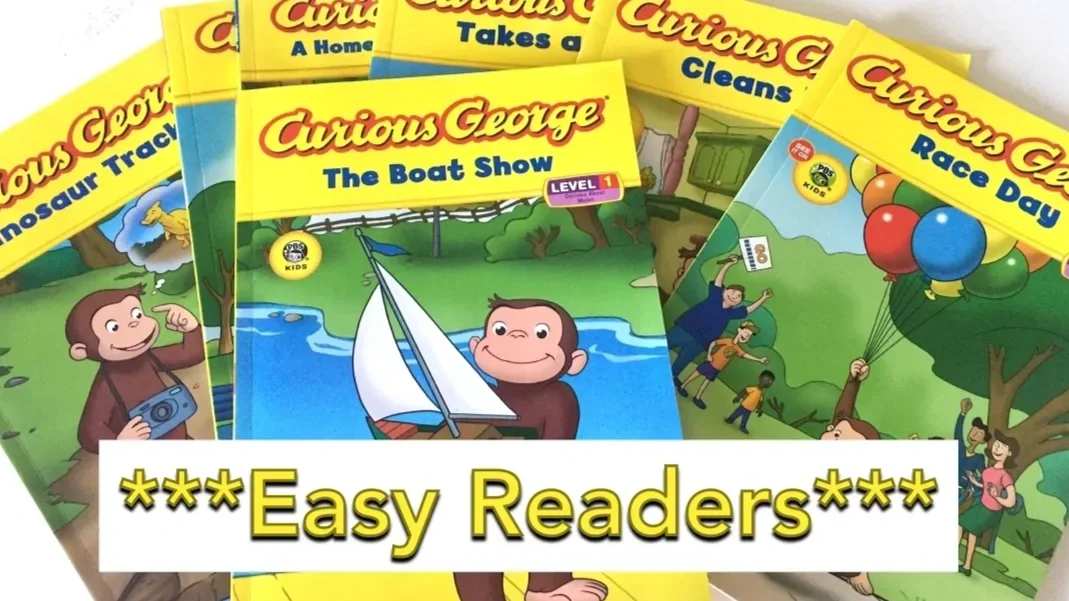
Curious George Early Readers
Though these books are not part of the Waldorf curriculum, we do have an assortment of picture books. One way to repurpose a good book is to create new stories based on the pictures, so your children can enjoy some of the stories you make up. However, children respond really well to repetition so there’s tremendous benefit to telling the same story over and over again.
Literature Based Curriculum
-
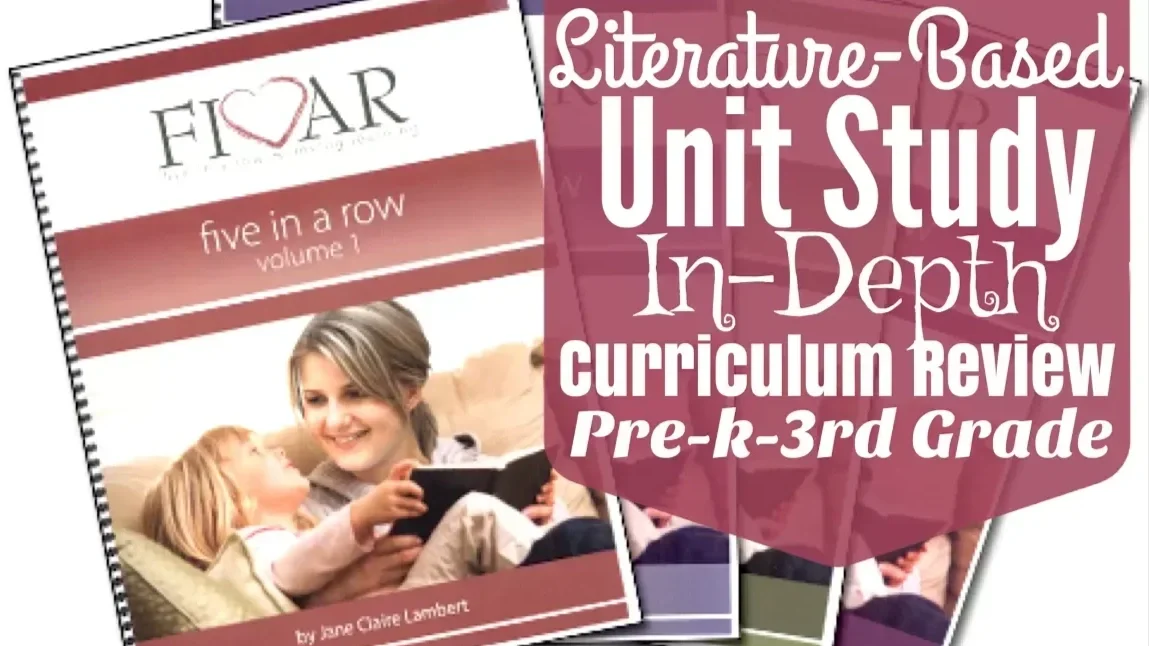
Five in a Row | Curriculum Review | Literature Based | Pre-K, 1st, 2nd, & 3rd Grade
If you are looking for a literature-based unit study approach for your young children, Five In A Row is a great curriculum to use. Using picture books as the literature, FIAR (Five in a Row) derives lessons from the stories. The picture book is read five days in a row and each day a new lesson and activity are covered.
-
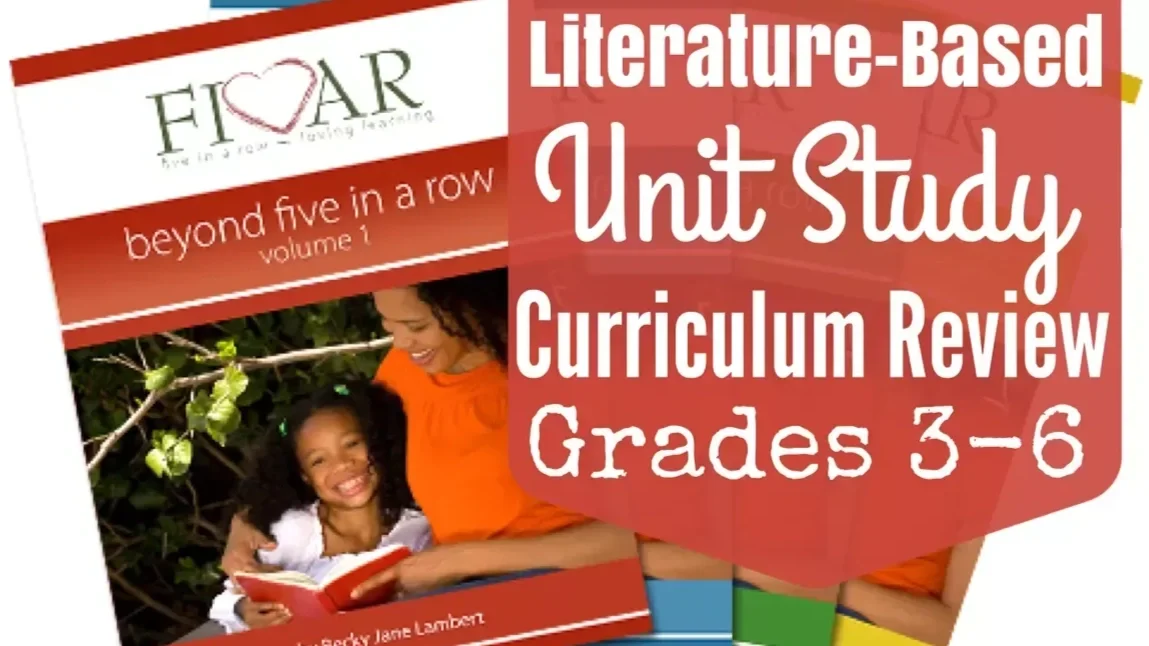
Beyond Five in a Row | 3rd, 4th, 5th, 6th Grade Curriculum
If you are looking for a literature-based unit study approach for your elementary aged children, Beyond Five In A Row is a great curriculum. Using quality chapter books as the literature, Beyond Five in a Row derives lessons from the stories.
-

MOVING BEYOND THE PAGE | Literature Based | 6th & 7th Grade Curriculum Choices
If you want a literature-based all inclusive curriculum, Moving Beyond The Page may be the curriculum you're looking for. This curriculum integrates language arts, science, and social studies together using literature as the 'textbooks'. An independent math curriculum, such as Right Start Math, is suggested, and the website sells that separately.
-

4th & 5th Grade Curriculum Choices | MOVING BEYOND THE PAGE |
If you want a literature-based all inclusive curriculum, Moving Beyond The Page may be the curriculum you're looking for. This curriculum integrates language arts, science, and social studies together using literature as the 'textbooks'. An independent math curriculum, such as Right Start Math, is suggested, and the website sells that separately.

Poetry
Poetry Main Lesson Block
My 10-year-old daughter requested a unit on poetry. Since we’ve included poetry in our main lesson blocks as part of the lessons or opening activities, we had a lot of resources to choose from. I narrowed down the lessons to focus on three main areas: biographies, poetry and composition. To help with the poetry writing portion of this unit, I plan to use the Interactive Poetry Journal by Fatima Mohammad. This journal accompanies the book Time to Rhyme which is written and illustrated by the talented poetess Fatima Mohammad. I’ve come to enjoy poetry written by children and find that my 10-year-old daughter does as well.
In addition to the interactive poetry journal, I have three poetry books that include biographies. I especially like adding biographies to our units whenever possible. What’s great about these resources is that they include the poetry that is mentioned throughout the biography. I learned about some poetry books for two voices by my friend Lindsey, and though we bought them years ago, we are only just now incorporating them into our unit. I couldn’t do a poetry unit without including my favorite poetry book for children called Plum by Tony Mitton. I scheduled this unit for two weeks with an additional two weeks to continue writing poetry as we move on to other lessons.
Poetry Teatime Companion
My 10-year-old daughter requested a unit on poetry. Since we’ve included poetry in our main lesson blocks as part of the lessons or opening activities, we had a lot of resources to choose from. I narrowed down the lessons to focus on three main areas: biographies, poetry and composition. To help with the poetry writing portion of this unit, I plan to use the Interactive Poetry Journal by Fatima Mohammad. This journal accompanies the book Time to Rhyme which is written and illustrated by the talented poetess Fatima Mohammad. I’ve come to enjoy poetry written by children and find that my 10-year-old daughter does as well.
In addition to the interactive poetry journal, I have three poetry books that include biographies. I especially like adding biographies to our units whenever possible. What’s great about these resources is that they include the poetry that is mentioned throughout the biography. I learned about some poetry books for two voices by my friend Lindsey, and though we bought them years ago, we are only just now incorporating them into our unit. I couldn’t do a poetry unit without including my favorite poetry book for children called Plum by Tony Mitton. I scheduled this unit for two weeks with an additional two weeks to continue writing poetry as we move on to other lessons.
Poetry Tea Time | Poetry Books
The first poetry book I bought after having children was in 2002. It is called Plum by Tony Mitton and illustrated by Mary GrandPre and we absolutely LOVE it!! The illustrations are stunning larger-than-life paintings that perfectly capture the essences of the poetry.
We first introduced poetry in our homeschool as part of a unit study in 2008. One of our most memorable takeaways from that units was The Caedmon Poetry collection (link below). It's a collection of poetry read by the poet, and it's an amazing resource and treasure. Listen to audio clips at the end of the video. Following the unit, we started on the Shel Silverstein's silly poetry that delights both children and adults.We read one poem a day and it was something my children looked forward to. On occasion we would return to favorite poems and eventually memorized parts or all of them. If you want to add poetry to your homeschool, Poetry Tea Time created by Julie Bogart might be just what you need.

Literature
Literature Based Curriculum Review | 5th & 6th Grade
I love the concept behind these language arts workbooks. They are paired with popular and classic novel to help students learn vocabulary, reading comprehension and literary analysis in a fun and engaging way. I'm just sad it didn't work well for two of my children, but there's hope for my last student!
What's curious is that while my two boys (who did this workbook in 6th or 7th grade), it didn't seem like they really liked it or were into it. Admittedly, I had assigned these lessons as 'filler lessons' or 'busy work'. While I can't devote undivided attention to each student in our homeschool, I choose some work that they can do independently that has some academic value. It seemed like this was a win, win, win. Independent work, academic value and best of all, based on a book they love. The problem was the last part. Because it was based on a book they loved, having to deconstruct in an academic way took the pleasure out of the reading process and the enjoyment out of the book. My children could talk for hours about a book they love, but asking direct question to test reading comprehension or vocabulary simply took the spirit out of the book. What's interesting is that looking back, the boys said they did like these lessons! Go figure...I guess you don't really know what's going on in their heads, or rather, maybe they don't! It's possible in retrospect, they remember the aspects they enjoyed about the lessons, and not the parts that they didn't. Overall, I think the concept is spot on and creative. Maybe it will work better with my girl.
High School English Curriculum
When choosing English literature books for my 9th grader, I looked for ones with a historical theme, set in a time period we were studying or were American classics. That way, the books my son was reading for English complemented his US History studies. I chose a variety of books ranging in grade level from junior high through high school. There is a mix of classics, historic fiction and biographies ranging in time period from the 1700’s to the 1900’s. I don’t expect my son to complete this extensive book list, but I do hope to make a good dent in this stack of books! So far, he is excited when books related to one another is some way. He’ll say, “Oh I know Benedict Arnold, he was in My Brother Sam Is Dead.” or “Oh, Common Sense, I read about it in history!” And I’m thinking, “yeah, I did that on purpose.” 🙂

Copywork
Copywork & Dictation for the Muslim Child
Each week a name of Allah will be focused for the duration of the week. On Day 1 of the week, the new sentence is presented and the student copies the sentence in the workbook. On Day 2 (the the previous lesson covered by a piece of paper), the teacher reads the sentence to the student who then writes the sentence into the workbook. Upon completion of the sentence, the student self corrects by checking the previous lesson. Mistakes are erased and corrected right away. Day 3 and Day 4 are repeats of the first two days and Day 5, the students writes the sentence from memory.
These lessons are short lasting 5 minutes in Level 1 to less than 15 minutes in Level 3. These lessons are designed to be semi-self guided, short and repetitive. The repetitive nature of this curriculum is purposeful. The goals for the week's worth of lessons can be multifold depending on which aspects you wish to focus on. Goals may include, handwriting, spelling, grammar and punctuation, memory work, memorization of the 99 Names, memorization of the ayat (or portions of the ayat) in Arabic, as well as listening and comprehension skills.
Levels get progressively more challenging, but the format remains the same. By Level 3, a student may choose to use a fountain pen for copywork and a pencil for dictation, but in Level 1 and 2, a pencil is recommended.
While this curriculum is geared towards the Muslim family, it is intended for everyone.
It can be used as a copywork and dictation curriculum to support multi-cultural studies, religious studies and lessons of diversity and inclusion.
❤️🧡💛💚
❤️❤️❤️❤️❤️❤️❤️
Level 1 (red level) includes:
•teacher’s manual (30 pages),
•36 weeks of content (5 lessons per week) (66 Pages),
•Wide Ruled pages (86 pages),
•Narrow Ruled pages (74 pages),
•Cursive Wide Ruled pages (86 pages),
•Cursive Narrow Ruled pages (74 pages),
•5 minutes lessons,
•One Qur'anic ayat in which the name of Allah has been mentioned,
•short sentences,
•repetitive sentences (included are ones that are the same but with added content the following week)
•large lines for writing
•suitable for grades 1st through 3rd
•Digital file so you can print as many copies as you need for all your children!
Get your Level 1 curriculum here:
https://www.pepperandpine.com/product/copywork-and-dictation-level-1/
🧡🧡🧡🧡🧡🧡🧡
Level 2 (orange level) includes
•teacher’s manual (33 pages),
•36 weeks of content (5 lessons per week) (64 pages),
•Wide Ruled pages (87 pages),
•Narrow Ruled pages (74 pages),
•Cursive Wide Ruled pages (87 pages),
•Cursive Narrow Ruled pages (74 pages),
•less than 10 minute per lessons,
•Two Qur'anic ayat in which the name of Allah has been mentioned,
•mix of short, medium and occasionally long sentences,
•medium lines for writing
•suitable for grades 2nd through 4th
•Digital file so you can print as many copies as you need for all your children!
Get your Level 2 curriculum here:
https://www.pepperandpine.com/product/copywork-and-dictation-level-2/
💚💚💚💚💚💚💚
Level 3 (green level) includes
•teacher’s manual (36 pages),
•36 weeks of content (5 lessons per week) (81 pages),
•Wide ruled pages (95 pages),
•Narrow ruled pages (86 pages),
•Cursive Wide ruled pages (95 pages),
•Cursive Narrow ruled pages (86 pages),
•mix of medium and long sentences, with occasional short sentences,
•Three Qur'anic ayat in which the name of Allah has been mentioned,
•small lines for writing
•opportunity to use fountain pen for this level,
•suitable for grades 3rd through 5th
•Digital file so you can print as many copies as you need for all your children!
How We Do Copywork and Dictation
How do you do copywork and dictation? I share snippets from our homeschool day via Instagram Stories to show you how we do Copywork and Dictation in our homeschool. These are live lessons. To see more of our homeschool day, be sure to find me on Instagram. Copywork and Dictation for the Muslim child is a curriculum using ayat which mention the 99 names Allah as content for copywork, dictation and memory work.
Each week a name of Allah will be focused for the duration of the week. On Day 1 of the week, the new sentence is presented and the student copies the sentence in the workbook. On Day 2 (the the previous lesson covered by a piece of paper), the teacher reads the sentence to the student who then writes the sentence into the workbook. Upon completion of the sentence, the student self corrects by checking the previous lesson. Mistakes are erased and corrected right away. Day 3 and Day 4 are repeats of the first two days and Day 5, the students writes the sentence from memory.
These lessons are short lasting 5 minutes in Level 1 to less than 15 minutes in Level 3. These lessons are designed to be semi-self guided, short and repetitive. The repetitive nature of this curriculum is purposeful. The goals for the week's worth of lessons can be multifold depending on which aspects you wish to focus on. Goals may include, handwriting, spelling, grammar and punctuation, memory work, memorization of the 99 Names, memorization of the ayat (or portions of the ayat) in Arabic, as well as listening and comprehension skills.
Copywork and Dictation Curriculum
Copywork and Dictation for the Muslim child is a curriculum using ayat which mention the 99 names Allah as content for copywork, dictation and memory work.
Each week a name of Allah will be focused for the duration of the week. On Day 1 of the week, the new sentence is presented and the student copies the sentence in the workbook. On Day 2 (the the previous lesson covered by a piece of paper), the teacher reads the sentence to the student who then writes the sentence into the workbook. Upon completion of the sentence, the student self corrects by checking the previous lesson. Mistakes are erased and corrected right away. Day 3 and Day 4 are repeats of the first two days and Day 5, the students writes the sentence from memory.

Reading & Writing
Ordinary Parent's Guide to Teaching Reading
We’ve worked through the Ordinary Parent’s Guide to Teaching Reading by Jessie Wise and Susan Buffington twice! I didn’t use this curriculum with my oldest child, but I used it with my second and third child and am undecided on whether I’ll use it with my fourth one. Since we use a Waldorf curriculum, I want to clarify that the Ordinary Parent’s Guide to Teaching Reading is not a Waldorf or Waldorf inspired curriculum. In fact it’s quite the opposite of how a Waldorf curriculum teaches reading. In a Waldorf curriculum reading is taught through writing in a holistic imaginative way in which the words are born within the child and written on paper. Then the child reads what she has written and in this way, readers are made by the child. As beautiful as this process is, it didn’t work as I imagined.
Enter the Ordinary Parent’s Guide to Reading (OPGR). This curriculum is very complete, easy to use and yields results. You child will know how to decode words, learn how to read and establish a good foundation for spelling. Written is a scripted manner, the OPGR takes the guesswork out of how to teach reading. It’s written in an authentic voice so that anyone who reads sounds natural. I changed very little of the script, finding it easy to read as it was written. This is an oral curriculum; there is nothing the child needs to write down.
There are 230 lessons beginning very easy with each letter of the alphabet and its sound taking one lesson. The lessons quickly accelerate and become longer, or at least more time consuming, and increase in difficulty disproportionately. Each lesson comes with a built-in review of the previous lesson, but it is advised to review previous lessons before moving forward. This curriculum takes two years to complete if you do four lessons a week. I wouldn’t advise doubling up on lessons to progress faster, but on one occasion, we simply didn’t finish the book because midway through my child learned to read on his own and accelerated very quickly in his reading ability. I do think the curriculum is extremely valuable in laying a good foundation for spelling, so even if your child has already learned to read or learns in the course of doing this curriculum, it’s still of value to complete the course.
The only things you’ll need to supplement this curriculum with are some index cards and a pen to write the letters of the alphabet for the first several lessons. You may write the two-letter blends as well. I chose to write directly in the book.
Have you used this curriculum? Did you like it? Let me know below!
Storytelling Games | Creative Writing
Do you struggle with getting your kids to write? Why not try these educational games to inspire creative storytelling. You can play these games for fun or as part of your homeschool or to support your child’s education. I struggled with storytelling for many years. Often my stories were endless descriptions of settings with no story. Or a monotonous journey with no action. Though these games may not solve those problems, they will give your creativity a boost.
Create-A-Story is a board game for children and adults to creatively and strategically build a story using elements gathered during the game. As you progress around the board, you land on printed tiles indicating which card you’ll add to your stash with ‘plot’, ‘character’, or ‘setting’ as some of them. At the end of the game you can use as many story elements you have to create a story. They more the better! Once you assemble your story with the worksheet provided, you can write your story. I found this game most useful for students 4th grade and up, but if you have a student who can write more easily at a younger age, this game might come in handy, or you can use this game orally for any age student.
Memory Palace by Peaceable Kingdom is a tiled board game illustrating a house with many rooms on individual tiles. The game comes with small circular tiles with prints of whimsical silly animals. Arrange your house tiles as you wish then randomly pick animals which are face down. Tell a story about the animal and the room it’s in. When the story is done, flip the animal card down and move on to the next player. After a total of six turns, it’s time to use your memory to retell the stories. This game is fantastic for all ages. It’s a cooperative game that young children will delight in and older children will find it creatively challenging. Adults can make their stories longer or keep it simple. You can choose your favorite story and write it down together if you wish, though this is a modification I’m suggesting.
Create A Story Cards by eeboo are beautifully illustrated cards with just the right amount of detail to inspire a whole story or a segment of a story. With three ways to play, you and your children will not be at a loss of how to use these cards. Lay them out to show story sequence, or shuffle cards and distribute for ‘silly’ stories lines. If you wish, you can also write down a story when the game is complete.
Live Cursive Handwriting Lesson
Here's a live homeschooling lesson for cursive handwriting for my 12-year-old son. Handwriting has always been a struggle for my boys, but with practice, they've definitely improved. I've teetered on the fence of whether or not to teach cursive handwriting and insist that my students master this skill. While I've presented and taught cursive handwriting to each of my students so far, I have not insisted that they master it or use it in their dictation, copywork or narrations. Because they've struggled with it, I left it off until they were better at handwriting and more willing to try. With my 12-year-old son, that time never came. He always complained and disliked it. With other lessons that were more pressing, I didn't choose this battle, and rather dismissed the lessons before mastery.
This year, I've approached cursive handwriting differently, as so far it's been hugely successful. First, I made DIY handwriting paper with one of our 'mini' chalkboards we got from Waldorf Supplies. It's 22"x32", so not tiny by any means, but certainly smaller than my mounted 4'x6' chalkboard. These are small enough to be portable and light enough to be mounted with mounting tape. I drew in lines for him and gave him a piece of white chalk to practice our copywork which consists of Islamic Dua from the book The Accepted Whispers. By writing complete sentences, or rather just words, my son has learned cursive handwriting in a more enjoyable format. Rather than toil through lines of H's and R's, he can write whole words and sentences. The other thing that has made this more successful than past attempts is using chalk. While some may disagree on the use of chalk to learn handwriting versus becoming accustomed to using a pencil or a pen, it was the preferred method for centuries. Using chalk allows for a smoothness that easier to achieve than with pencil. You can also easily erase simple mistakes and keep going and it's environmentally conscience.
Our chalkboard rests easily on my son's desk and with a mini erasers, he can practice as much as we needs. The limited lines and large format also eases students into mastering the cursive handwriting skill.
Since the introduction of cursive handwriting in this way, not only has my son dramatically improved his handwriting, he willing does his lessons and even asks to do them!
DIY Handwriting 'Paper'
We made some DIY handwriting paper. We used our chalk pastel pencils and chalkboard to make “paper“. They worked well for our purposes temporarily. It would be especially useful for children who struggled with fine motor details as you can use chalk and write the letters larger.
Handwriting Lesson
We are making handmade handwriting paper with yellow and orange block crayons. Make your bands light so the handwriting can be seen. Also, the block crayons are rich in beeswax, so a light coat is better so that your pencil may glide smoothly.
Handwriting Paper with Block Crayons
Making your own handwriting paper for young students couldn't be easier. Just use two or three different colored block crayons and draw three touching parallel lines across the page using the medium side of the crayon. I recommend using light colors so it's easier for your student to see their handwriting.
I learned this technique from the Waldorf teacher, Ester Centers, during the Live Education! Summer Seminar, a yearly conference for homeschoolers and teachers alike.
I taught my 7-year-old daughter how to make these lines as well, so she can make her own paper. Sometimes she makes it, other times I make it for her. She still needs some practice because the lines are always straight, but even the act of making straight lines is part of handwriting practice so don't overlook that part.
I leave a small white space between each set of three lines so there's a clear distinction between the lines.
The downside to using crayon to make DIY handwriting paper is that you cannot erase pencil mistakes. If you are writing with a stick crayon, then it doesn't matter as you could not erase the crayon anyway.
I prefer using an orange or light brown for the top and bottom line and yellow for the center line. A homeschooler shared with me that she used blue for the upper line, green for the middle and brown for the bottom line to depict sky, grass and earth so the child knows which letters are tall and which ones fall below the line.
Curious George Early Readers
Who doesn’t love the Curious George series! These are the level 1 and level 2 readers from Rainbow Resource. They have simple storylines, bright illustrations and come with activities included at the back of the book that relates to the story.
Though these books are not part of the Waldorf curriculum, we do have an assortment of picture books. One way to repurpose a good book is to create new stories based on the pictures, so your children can enjoy some of the stories you make up. However, children respond really well to repetition so there’s tremendous benefit to telling the same story over and over again.
Sometimes, I use a picture book as inspiration for my own made up stories. You can retell the story to your children and see if they remember which book it’s from or you can embellish the story or change the ending for a bit of fun.
I can’t say I love the illustrations from the Curious George books, but we can all agree they are classics and iconic at this point. Had it not been gifted to us 10 years ago, I may have permanently overlooked this series of books.

Literature Based Curriculum
Five in a Row | Curriculum Review | Literature Based
If you are looking for a literature-based unit study approach for your young children, Five In A Row is a great curriculum to use. Using picture books as the literature, FIAR (Five in a Row) derives lessons from the stories. The picture book is read five days in a row and each day a new lesson and activity are covered. The FIAR curriculum comes with 4 volumes covering a total of 70 books. Each volume can be used in any order, but the 4th volume is more advanced. This curriculum is very well priced, and since you can borrow the books from the library, you can keep your costs very low. There are additional resources at the back of the curriculum for the convenience of the parent, but additional materials are suggested to supplement the lessons. I walk you through a lesson at 11:28. You can find more information about Five In A Row here.
Beyond Five in a Row | 3rd, 4th, 5th, 6th Grade
If you are looking for a literature-based unit study approach for your elementary aged children, Beyond Five In A Row is a great curriculum. Using quality chapter books as the literature, Beyond Five in a Row derives lessons from the stories. The 3 volume series contains secular books and lessons (though the books have been chosen with a Christian worldview) with the 4th volume being a Christian supplement resource. Each volume features two fiction and two nonfiction books. Lessons are derived from the chapter's content in a unit study approach. This curriculum is very well priced, and since you can borrow the books from the library, you can keep your costs very low. There are additional resources at the back of the curriculum for the convenience of the parent, but additional materials are suggested to supplement the lessons. You can find more information about Five In A Row here.
MOVING BEYOND THE PAGE | Literature Based
6th & 7th Grade Curriculum Choices
If you want a literature-based all inclusive curriculum, Moving Beyond The Page may be the curriculum you're looking for. This curriculum integrates language arts, science, and social studies together using literature as the 'textbooks'. An independent math curriculum, such as Right Start Math, is suggested, and the website sells that separately. For the 11-13 year bracket, there are two semesters that span the year, each with five units each. Each unit takes about 3-4 weeks to complete. Each unit has about three workbooks with about 10 lessons each. Each lesson has multiple activities which are worksheet based. The curriculum also comes with a science kit which has dozens of science projects, experiments and activities all neatly packed and labeled making the hands-on portion of this curriculum super easy to use and incorporate into the curriculum. The literature for the language arts program complements the science unit or social studies unit making this an interdisciplinary curriculum.
MOVING BEYOND THE PAGE | Literature Based
4th & 5th Grade Curriculum Choices
If you want a literature-based all inclusive curriculum, Moving Beyond The Page may be the curriculum you're looking for. This curriculum integrates language arts, science, and social studies together using literature as the 'textbooks'. An independent math curriculum, such as Right Start Math, is suggested, and the website sells that separately.
For the 8-10 year bracket, there are four concepts to span the year, each with three units each. Each unit has about two workbooks with about 10 lessons each. Each lesson has multiple activities which are worksheet based. The curriculum also comes with a science kit which has dozens of science projects, experiments and activities all neatly packed and labeled with the concept, unit, lesson and activity making the hands-on portion of this curriculum super easy to use and incorporate into the curriculum.
The literature for the language arts program complements the science unit or social studies unit making this an interdisciplinary curriculum.
Find more info about the Moving Beyond the Page curriculum here.

